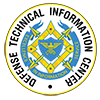Navy RFI – FY18-22 SEASABER Increment 1 Development and Production
The Department of the Navy, Naval Sea Systems Command (NAVSEA), has issued a Request For Information (RFI) on behalf of the Program Executive Office (PEO) Integrated Warfare Systems (IWS) 2.0 Above Water Sensors Directorate. The Government is conducting market research seeking industry inputs on laser weapon system development solutions applicable to U.S. Navy guided missile













